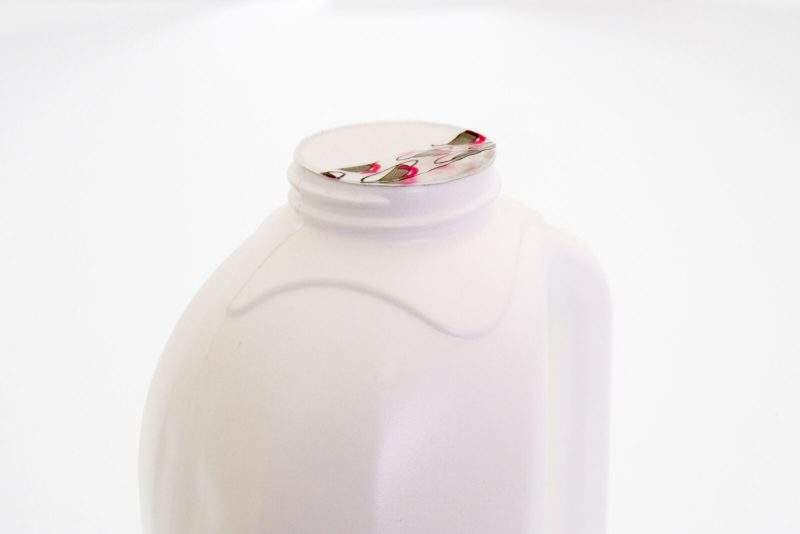
It is a difficult decision to voluntarily recall a large number of products because of the potential presence of extraneous material in its containers. However, as recorded by the Canadian newspaper Arrow Lakes News, this is exactly what happened to one dairy, which voluntarily launched a recall of 19 of its milk products from across British Columbia.
What followed was a three-month long investigation which concluded in September 2017 but failed to reveal the nature of the foreign objects or contaminants that had managed to infiltrate themselves inside the containers. The incident prompted the dairy to take swift and immediate action to include an additional layer of protection of induction seals to all of its milk jugs.
Lessons to learn: a shift in buying habits
The recall decision by the brand is admirable and can only bolster its brand image in light of the fact that competitor dairies have not yet moved to such seals to protect their product. There are some concerns that the fear of drinking tainted milk has reportedly caused some consumers to become somewhat wary. One supervisor from a grocery store in the area said he had ‘never seen anything like it’ in the 15 years he has been in the industry and there are claims that the episode has triggered a shift in consumer buying habits, with a number of them allegedly switching to milk alternatives, such as soy or almond milk as they believe they could be a safer product.
This consequence is hardly surprising if the findings of recent market studies are anything to go by. For example, extensive focus group surveys by Selig in 2016 of American consumers of dairy and other packaged foods to identify preferences in sealing technologies found that ensuring product safety by providing induction seals was of prime importance. Preventing product leakage and maintaining freshness came after, followed by ease of opening and the ability to release the seal without the aid of a kitchen utensil.
Sealing the deal: enhanced customer confidence and loyalty
Often what comes with consumer confidence is enhanced customer loyalty and it seems this theory applies in the packaged foodstuffs sector, particularly as consumers become increasingly aware of the need for optimum product safety and hygiene. In one 2007 study of the Australian dairy industry, a correlation emerged between the introduction of the Lift ‘n’ Peel™ liner – Selig’s half-moon lift tab seal – and a significant increase in sales for those brands that adopted this sealing technology.
One brand in particular, reported not only a growth in sales but also significant improvements in leakage protection and extended shelf life from 12 to 14 days. Meanwhile, independent consumer research performed in North America highlighted that almost three-quarters of respondents who preferred the Lift ‘n’ Peel™ solution would switch brands to one that featured this easy open liner. So why are some dairy companies still not using a secure seal on their containers to safeguard their contents?

US Tariffs are shifting - will you react or anticipate?
Don’t let policy changes catch you off guard. Stay proactive with real-time data and expert analysis.
By GlobalDataLearning lessons: a staple item for the UK diet
Milk has consistently been a big part of the UK diet for centuries so, naturally, it has been the nation to lead the way in reliable, leak-free and secure packaging for dairy products. From the porcelain stoppered glass bottles that were used for the first domestic deliveries of milk in the 1880s, milk containers have come a long way and almost all milk is now supplied to the country’s retail market in HDPE screw-capped jugs with induction sealed foil seals.
These seals do, however, have to work for both the producer and the consumer, meaning they must be reliable, tamper-evident and quick to apply on a rapidly moving production line, while also being easy to remove from the container. As a result, the process of applying the seal is just as critical to its success as the performance of the liner material itself. Although an induction-sealing machine is the only equipment needed, there are a series of ideal process conditions that must be achieved to guarantee the perfect seal.
Three key parameters: pressure, heat and time
Close control of the three key parameters of pressure, heat and time is vital for optimal results. Firstly, pressure is needed to ensure an even seal to the lip of the container opening. This is achieved by making sure that each closure is level and screwed down onto the filled container at the right application torque to provide adequate pressure. Heat is then applied via electromagnetic induction coils to create a magnetic field around the foil seal to raise the temperature to the point where a thin polymer layer between the foil and the neck of the closure melts to form a hermetic seal.
Finally, the liner needs sufficient dwell time under the induction coils to allow the optimum temperature to be reached for melting and it again requires a certain amount of time for cooling to allow the bond to develop properly. Establishing the most appropriate process parameters for the line speed alongside the use of high-performance induction heat sealing devices and well-engineered liners will lead to consistent and accurate results.
With the right set-up in place, security seals on milk products will guarantee freshness, provide protection against leakages and safeguard consumers, while also being easy to open. Adopting this approach and introducing liners to all dairy packaging will prevent future large-scale recalls – as well as the associated costs and potential damage to brand reputation – and, perhaps most importantly, give consumers confidence in a firm’s products for long-term business success.



